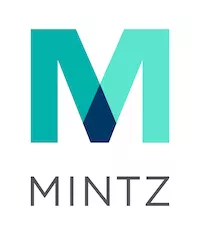- in United States
- within Law Practice Management topic(s)
The Centers for Medicare & Medicaid Services (CMS) announced a new primary care model—the Making Care Primary (MCP) Model—geared towards smaller, independent primary care practices and organizations that want to participate independently in value-based care initiatives. The MCP Model will be tested in eight states - Colorado, Massachusetts, Minnesota, New Mexico, New Jersey, New York, North Carolina, and Washington.
The MCP Model is a multi-payer 10.5-year model that will focus on
three primary goals:
- improving care management and care coordination,
- equipping primary care clinicians with tools to form partnerships with health care specialists, and
- leveraging community-based connections to address patients' health needs and their health-related social needs (HRSNs).
CMS is working with State Medicaid Agencies to design Medicaid programs to align with the MCP Model, and will engage with private payers in the coming months.
The MCP Model Design
The MCP Model is designed to permit primary care providers with varying levels of experience in providing value-based care to gradually adopt prospective, population-based payments to reduce reliance on fee-for-service payments. The MCP consists of three progressive tracks that enable a gradual transition to accountable care and allow participants to enhance primary care across three essential domains: expansion of care and chronic condition management, integration with specialty care providers, and identification of health-related social needs and connection to community supports and services:
Track 1 – Building Infrastructure: Track 1 is designed for primary care practices with no prior experience in value-based care. Participants focus on developing the foundational infrastructure for advanced primary care. Payment for primary care remains fee-for-service (FFS), with additional financial support from CMS to build infrastructure and advanced primary care capabilities. Participants can begin earning payments for improving patient health outcomes.
Track 2 – Implementing Advanced Primary Care: Participants build upon Track 1 requirements by partnering with specialists and social service providers, implementing care management services, and screening for behavioral health conditions. Payment transitions to a blend of prospective payments and FFS, with increased financial support from CMS. Participants can earn increased financial rewards for improving patient health outcomes.
Track 3 – Optimizing Care and Partnerships: Payment shifts to fully prospective, population-based payments, and financial support from CMS continues at a lower level than Track 2, but participants have the ability to earn greater financial rewards for improving patient health outcomes.
MCP Model Payment Structure
There will be six payment types to support MCP Model participants as they work to achieve care delivery and quality improvement goals:
Upfront Infrastructure Payment: "Low revenue" Track 1 participants and Track 1 applicants without an e-consult platform are eligible for optional upfront payments totaling $145,000 to be used to support investments in infrastructure, such as increased staffing and health IT capabilities. Tracks 2 and 3 participants are expected to implement e-consults with specialists as part of care integration.
Enhanced Services Payment: Participants in all three tracks are eligible to receive non-visit-based per-beneficiary-per-month (PBPM) payments that are adjusted to reflect the attributed population's social and clinical risk factors. Average payments will be $15 in Track 1, $10 in Track 2, and $8 in Track 3.
Performance Incentive Payment (PIP): Participants in all three tracks are eligible for upside-only performance incentive payments designed to reward participants for improvements in patient outcomes and quality measures. Track 1 participants have the potential to receive upside-only PIP payments of up to 3% of the sum of FFS payments, but Tracks 2 and 3 participants have the opportunity to receive significantly larger PIP payments.
Prospective Primary Care Payment (PPCP): Participants in Tracks 2 and 3 are eligible for quarterly PBPM payments that are calculated for each participant's patient population and are designed to support a gradual progression from FFS payment for primary care services to a population-based payment structure. Payment for primary care services will be 50% FFS and 50% PPCP for Track 2 participants and 100% PPCP for Track 3 participants.
MCP E-Consult: Tracks 2 and 3 participants will be eligible for $40-per-service payments to support primary care clinicians with eConsult billing, including its inclusion of post-service time to implement the specialist's recommendation.
Ambulatory Co-Management: Primary care practices participating in Track 3 are expected to enter into collaborative care agreements with specialists, who can receive monthly payments to support ongoing communication and collaboration between the primary care practices and specialists. Specialists can also receive additional revenue in exchange for meeting requirements set by the primary care practices.
Strategies to Achieve Health Equity
CMS has included several features in the MCP Model designed to improve health equity for Medicare and Medicaid beneficiaries. Organizations interested in participating in the MCP should note the following:
- Participants must develop a strategic plan to identify and reduce disparities in provision of care; CMS will collect demographic and HRSN data to evaluate health disparities in MCP Model communities.
- Participants must implement HRSN screening and referrals; CMS will track the percentage of patients screened for HRSNs.
- Participants can reduce cost-sharing for patients in need.
- CMS will adjust some payments based on clinical indicators and social risk.
Distinctions from ACO REACH and MSSP
The MCP Model is distinct from CMS's other primary care models designed for accountable care organizations (ACOs), such as the ACO REACH and Medicare Shared Savings Program (MSSP). In both ACO REACH and MSSP, ACOs partner with primary care practices and earn payments based on the amount of shared savings they achieve during a performance year.
In contrast, the MCP Model is similar to CMS's Comprehensive Primary Care and Primary Care First Models, which were past CMS models designed for physician practices and organizations that participate in the models independently and not as part of a broader ACO. The MCP Model is the first model that permits participation by primary care practices with no prior value-based care experience. Rather than using a shared savings model, the MCP Model uses incentives that reward performance on multiple measures, one of which is cost-related.
Overlaps with other CMS Payment Models
Generally, primary care practices and other organizations cannot participate in the MCP Model if they are already participating in another CMS payment model, with the exception of bundled payment models. This is fairly typical. Of note, MSSP participants can concurrently participate in the MCP Model during the first six months of its term, but the MCP Model does not provide a similar transition period for ACO REACH participants.
Next Steps
The MCP Model officially launches July 1, 2024. CMS plans to provide additional technical detail on the MCP Model's design and will release a Request for Applications (RFA) and commence the application period later this summer.
The content of this article is intended to provide a general guide to the subject matter. Specialist advice should be sought about your specific circumstances.




